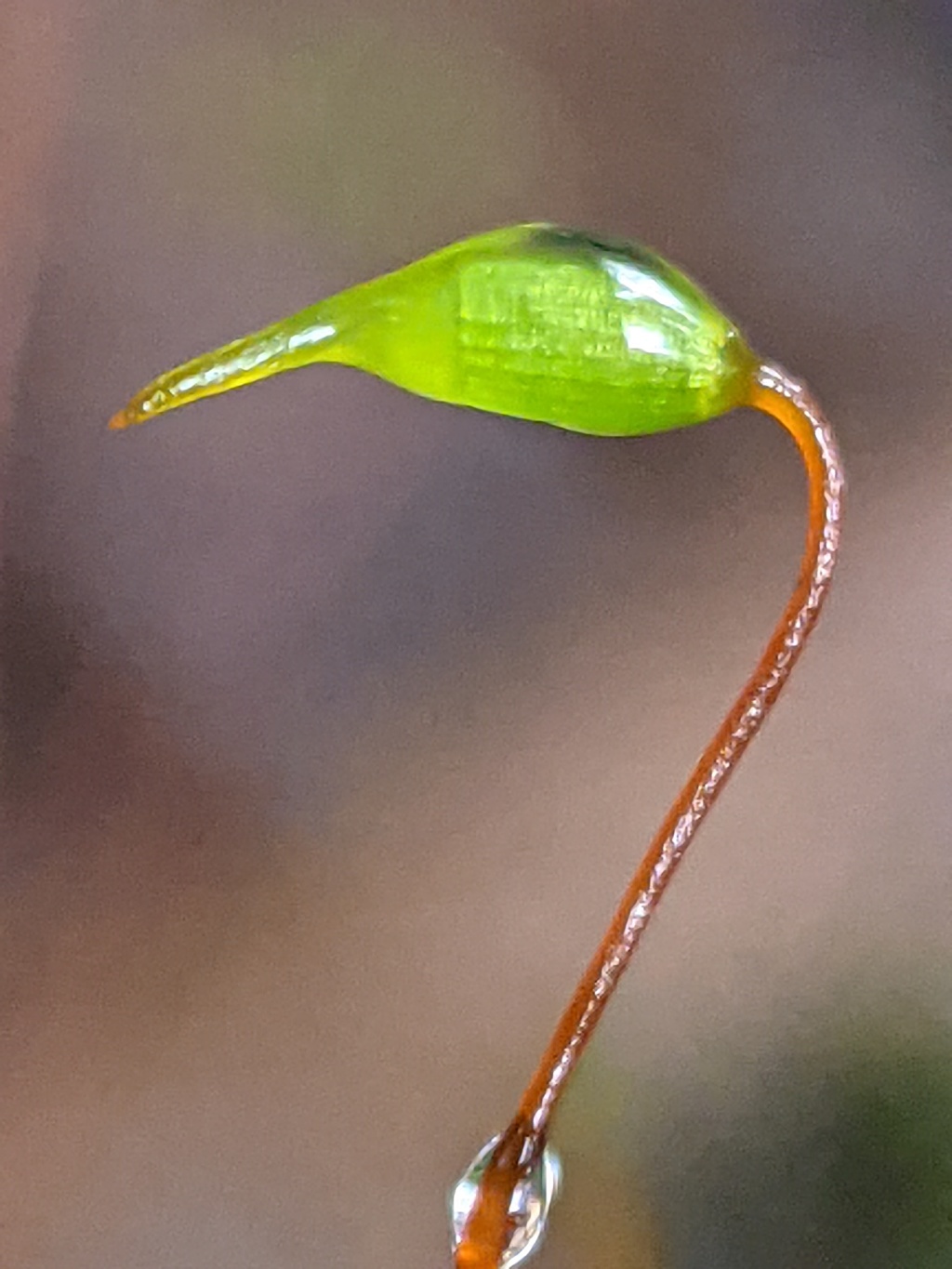Warburgiella
Autoicous or polyoicous (not in Victoria). Asexual propagules absent. Mats on logs and tree trunks and branches. Stems creeping, irregularly pinnate to bipinnately branched, with rhizoids ventrally; pseudoparaphyllia present, foliose. Stem and branch leaves similar, ovate-lanceolate to lanceolate, erect to erect-spreading and strongly falcate-secund to circinate when moist or dry, not in clear ranks, sometimes with an expanded sheathing base (not in Victoria); apex acuminate or piliferous; costa absent; margins entire or denticulate to serrate near apex, plane or recurved but occasionally appearing involute due to strong concavity, without a border; laminal cells elongate to linear, smooth, prorate or unipapillose; alar cells clearly differentiated, 2-4 inflated, oblong and often coloured in basal row and up to 3 subquadrate in a row apical to basal row. Capsules erect to pendent, symmetric, ellipsoid or obloid to cylindric, without an annulus, with a warty neck. Calyptra smooth, mitrate and sheathing whole capsule or cucullate, smooth, glabrous, entire or laciniate at base (not in Victoria). Operculum rostrate. Peristome double; endostome incurved when dry, same length as exostome teeth, with a high basal membrane; cilia present, rudimentary or absent.
Around ten species shared between tropical Africa and India through to New Caledonia south to Tasmania and New Zealand (Ramsay et al. 2004); two species in Victoria.
 Spinning
SpinningRamsay, H.P.; Schofield, W.B.; Tan, B.C. (2004). The family Sematophyllaceae (Bryopsida) in Australia, Part 2. Acroporium, Clastobryum, Macrohymenium, Meiotheciella, Meiothecium, Papillidiopsis, Radulina, Rhaphidorrhynchium, Trichosteleum, and Warburgiella. Journal of the Hattori Botanical Laboratory 95: 1–69.


